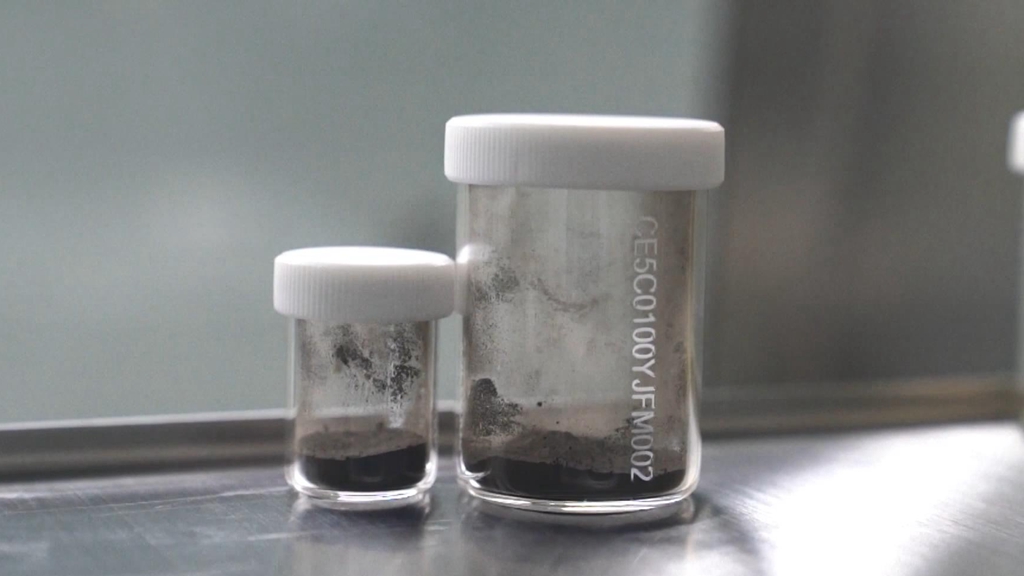
Lunar samples collected through China's Chang'e-5 mission. /China Media Group
Lunar samples collected through China's Chang'e-5 mission. /China Media Group
Lunar samples collected through China's Chang'e-5 mission have helped researchers to better understand lunar volcanic activities and the thermal evolution of the moon.
The researchers from the key laboratory of solar activity and space weather under the National Space Science Center, Shanghai Astronomical Observatory, Peking University and Shandong University Weihai Campus have studied the lunar samples and estimated the thickness of basalts, a type of rock formed during volcanic eruptions, near Oceanus Procellarum, the landing site of the Chang'e-5 mission.
The results show that at least four volcanic eruptions had occurred at Oceanus Procellarum, forming basaltic lava with median thickness of 230, 70, four and 36 meters, respectively.
The researchers found that as the distance from the two lunar rilles Rima and Mairan increases, the thickness of basalts gradually decreases, indicating that the crater of the two lunar rilles is the source of the basaltic eruptions near Oceanus Procellarum.
Based on the estimation of the area and age of each basalt unit, the researchers calculated the eruption rate of the basalts near the landing site of the Chang'e-5 mission, and discovered that the flux of lava in the area had significantly enhanced in the late stage of lunar volcanic activity about 2 billion years ago.
The maintenance of late lunar volcanic activity has always been a hot topic in the studies of the moon. Further research on the basalt samples taken by Chang'e-5 million is expected to provide evidence explaining the duration and scale of lunar volcanic activities.
In 2020, the Chang'e-5 mission retrieved samples from the moon weighing about 1,731 grams, which were the first lunar samples brought to earth in over 40 years.

